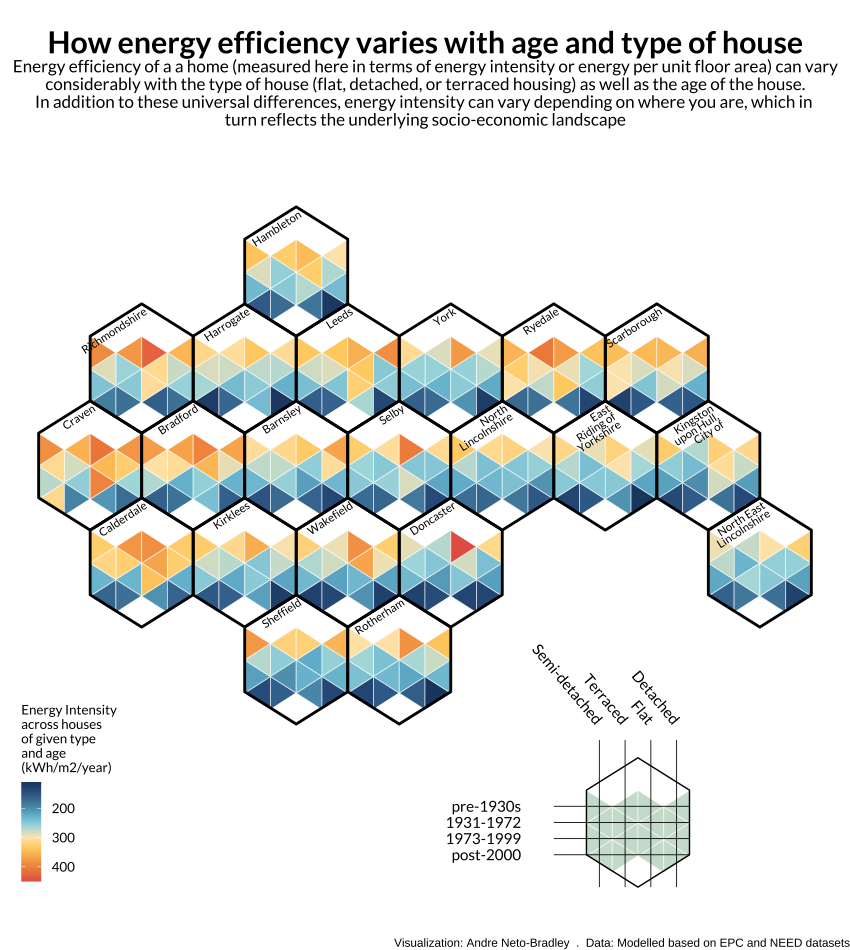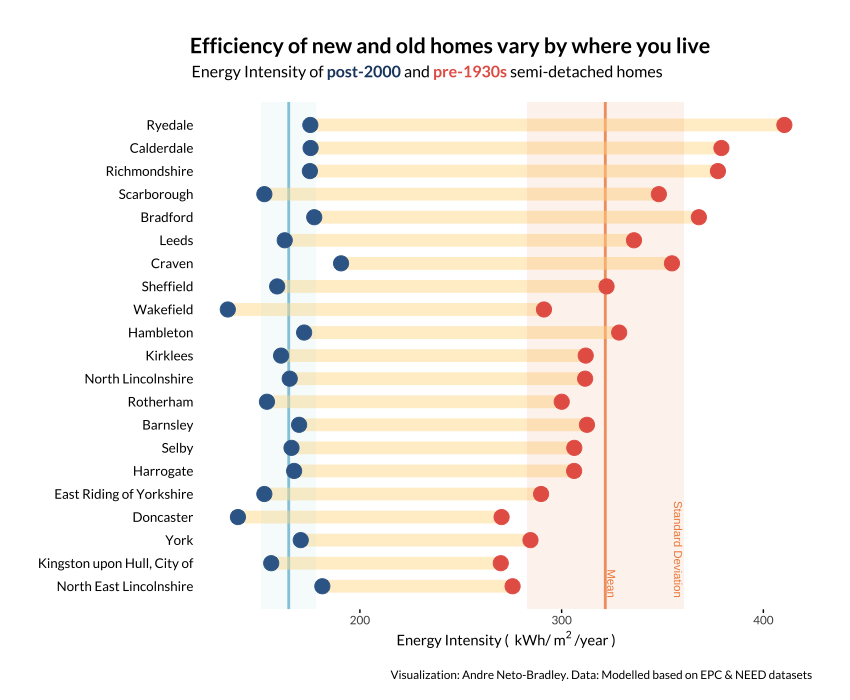EECinsights - Energy Efficiency of Homes in North-East of England
As part of the ongoing Energy Flexibility project we have been looking into regional and spatial trends in energy efficiency of homes across England. We have been using a bayesian multilevel model to estimate energy intensity of different types of home in each local authority. By using energy intensity as our measure - which is annual energy consumption per unit floor area - we negate differences arising from different sizes of homes and can make some insightful comparisons across the country.

While a lot of work on low-carbon buildings and urban planning has been focused on London, we’ve been taking a look at trends across the country. We’ve previously written about how energy efficiency of new build homes has an unequal distribution, and can have a compounding effect alongside other forms of socio-economic deprivation. In the map above we’ve taken a closer look at the region of Yorkshire and the Humber. You can see how the more recent a house is the more energy efficient it is. But the difference in energy efficiency of old and new builds can vary considerably from one authority to another.

If we compare pre-1930s to post-2000 semi-detached houses we can see this variation in difference quite clearly. While newer build homes have been built to more stringent building codes and have less variation in energy efficiency, older homes can vary show far more variation. This is largely a function of how many have been retrofitted and refurbished to be made more energy efficient. This in turn reflects underlying socio-economic differences, for example proportion of home ownership versus rental properties, as well as incomes and wealth of homeowners to fund such retrofits. This spatial heterogeneity in energy efficiency of homes requires locally targetted support for building fabric improvements (such as added insulation, draughtproofing, or double glazing), to ensure that homes with the worst energy efficiency can be brought up to standard despite spatial socio-economic inequalities.

